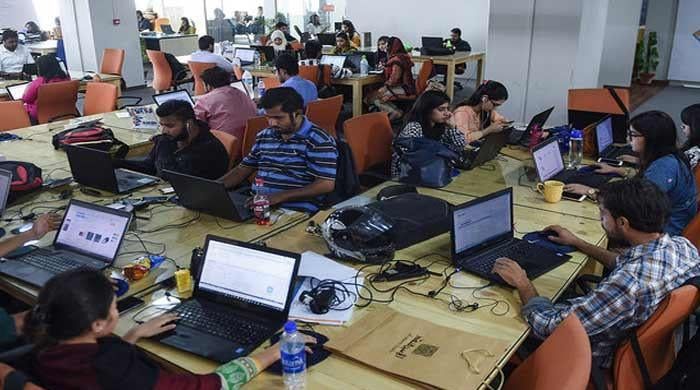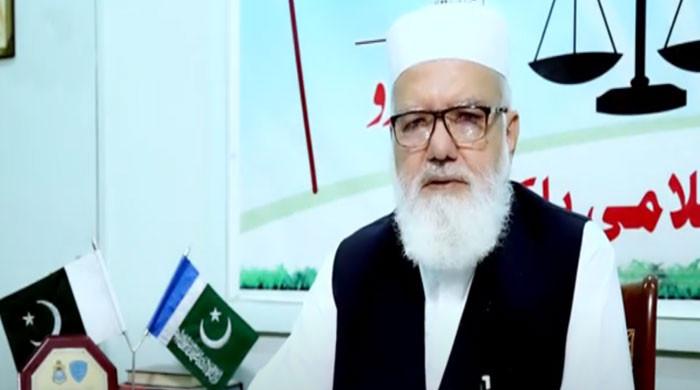A generation ago, Matriculation students entering higher secondary school (FA/FSc) were faced with a simple and clear choice: take the pre-medical route in the hope of being admitted to an MBBS (or BDS) program or take the pre-engineering path in hopes of being admitted to an engineering program or taking the ISSB exam to join the Pakistani armed forces.
High school graduates who successfully entered a medical school, engineering college, or the armed forces were seen as people on a sure path to joining the middle/upper-middle class.
Those who were not successful in any of the three things moved on to something else and their prospects were considered unknown before achieving a certain level of professional success.
For as long as I can remember, among engineering disciplines, electrical engineering has been the first choice. An electrical engineering program was (and still is) versatile and can open doors in a wide variety of sectors. That a university engineering position, especially electrical engineering, remained vacant was something unheard of.
In the mid-1990s, two- and three-year computer science degree programs began to proliferate in Pakistan. This was possible because in practice there was virtually no supervision of these programmes, unlike engineering programmes, which are subject to supervision by the Pakistan Engineering Council (PEC), and medical programmes, which are subject to the supervision of Pakistan Medical and Dental Council (PMDC).
For many years after computer science education reached the shores of Pakistan, these programs could operate with little interference and supervision. It would be a decade before the National Computer Science Education Accreditation Council (NCEAC) was established in 2005 to serve a similar role for computer science programs.
The excitement of the global Internet and dotcom boom of the late 1990s and the embryonic ecosystem of domestic tech startups in Pakistan made computing an attractive alternative for tens of thousands of high school graduates who did not or could not enter the world. hypercompetitive world. medical and engineering programs.
In 2000, just as the dot-com bubble of the previous decade was bursting in the United States, Pakistan introduced the caller pays policy (CPP) in the mobile cellular sector. The CPP policy had the effect of multiplying the number of subscribers to cellular telephone services in the country year after year.
A broader policy of deregulation of the country's telecommunications sector followed shortly after, in July 2003. The deregulation of the telecommunications sector attracted new investments and new companies to the sector. This drove demand for electrical engineers, and many institutions that could meet the regulatory and accreditation requirements of an engineering program, and even some that couldn't, began launching overly specialized electrical and “telecommunications” engineering programs.
The telecom boom in Pakistan lasted for just over a decade. By the early 2010s, several waves of telecommunications engineers had gained experience working for Pakistani cellular service providers and many had gone on to work for overseas employers. Career progression within companies had slowed, entry-level vacancies were scarce, subscriber numbers were asymptotic, and competition between service providers was fierce.
The introduction of 3G and 4G/LTE services provided a new boost to the industry, but then it slowed down. In the following years there was a consolidation of the sector, with exits and acquisitions that continue to this day.
Meanwhile, over the same period, the tech startup sector had been growing and maturing, with more companies launching each month, creating opportunities for capable computer scientists, but also for the many electrical engineers willing to take the leap.
If you keep an eye on emerging technology trends, you know that there have been many new technologies that have emerged from computing in the last 10 to 15 years (e.g. smartphone services and application development, cloud computing, data science ). , artificial intelligence, autonomous vehicles and cybersecurity).
Globally, electrical engineering has not been left idle either, with advances in battery technology, the Internet of Things, electric vehicles, drone technology, robotics, smart grids and renewable energy.
While the former account for a significant portion of Pakistan's tech sector, the share of opportunities for the latter is minuscule in comparison: between computer science and electrical engineering, the scale of opportunities is heavily tilted in favour of computer science.
In recent weeks, I have learned that one of the oldest and once most competitive engineering programs has been struggling to attract applicants.
Another public university, more recently established but in demand and with a large portfolio of engineering programs, anticipates that it will be able to fill all its seats by this fall, but has seen a massive drop in applications for all engineering programs except those that They are adjacent to computer science, such as software engineering and computer engineering.
In addition, some universities in second- and third-tier cities are receiving large numbers of applications for computer science programs, but are seeing a large fraction of spots in engineering programs go unfilled.
Once the most in-demand major in technical education, engineering has been overtaken by computer science and more specialized programs in artificial intelligence and data science, and is likely to become a longer-lasting trend unless changes occur in our economy. Most engineering jobs require an active industrial manufacturing base.
Severe power shortages in the early 2010s, followed by an exorbitant rise in energy costs, forced some Pakistani-owned industries, particularly in the textile sector, to close and, in many cases, relocate. to neighboring countries in the region such as Bangladesh and Vietnam. The technological trends in electrical engineering that I mentioned above have had very little impact on employment opportunities in Pakistan, except for a few casual employers.
A 2023 report by the Pakistan Institute of Development Economics (PIDE) titled ‘Breaking Down Graduate Unemployment in Pakistan’ reported that the average graduate unemployment rate in Pakistan rose slightly from 14.9% in 2018-19 to 16.1% in 2020-21. However, for engineering graduates, the same figure more than doubled from 11.2% to 23.5% during the same period. For medical graduates, it rose from 6.4% to 10.8%.
In conclusion, the changing landscape of technical education in Pakistan highlights the urgent need to re-evaluate our academic priorities and industrial strategies. While computer science and related fields have advanced rapidly and offer abundant opportunities and align with global technological trends, traditional engineering disciplines, particularly electrical engineering, face declining interest and uncertain prospects.
As highlighted in the PIDE report, the sharp increase in unemployment rates among engineering and medical graduates, who make up a small fraction of the university-age population, is a clear indicator of the ongoing deindustrialization and imbalance between educational results and market needs. .
To address this, policymakers, educational institutions, and industry stakeholders must collaboratively foster an environment that balances the development of emerging technological skills with the revitalization of our industrial base. By doing so, Pakistan can not only close the gap between education and employment but also pave the way for sustainable economic growth and innovation.
The author has a PhD in Education.
Disclaimer: The views expressed in this article are those of the author and do not necessarily reflect the editorial policy of Geo.tv.
Originally published in The News












